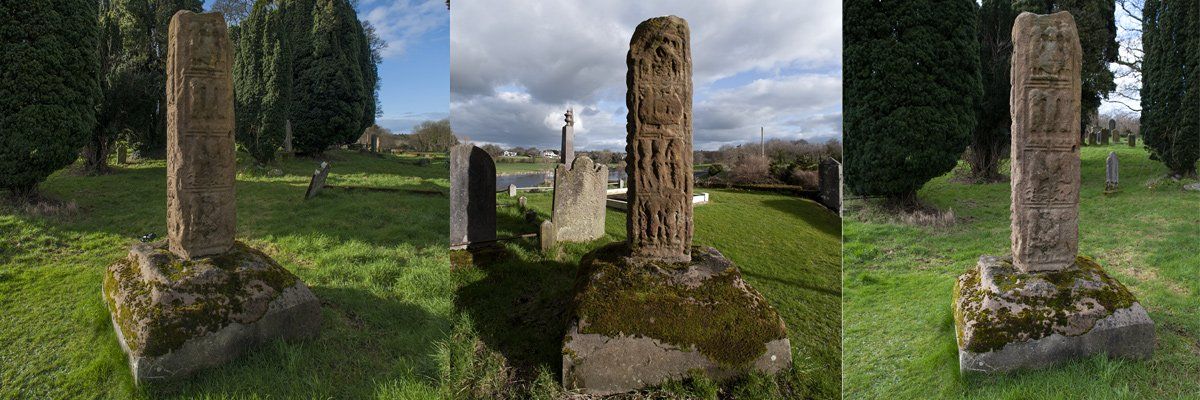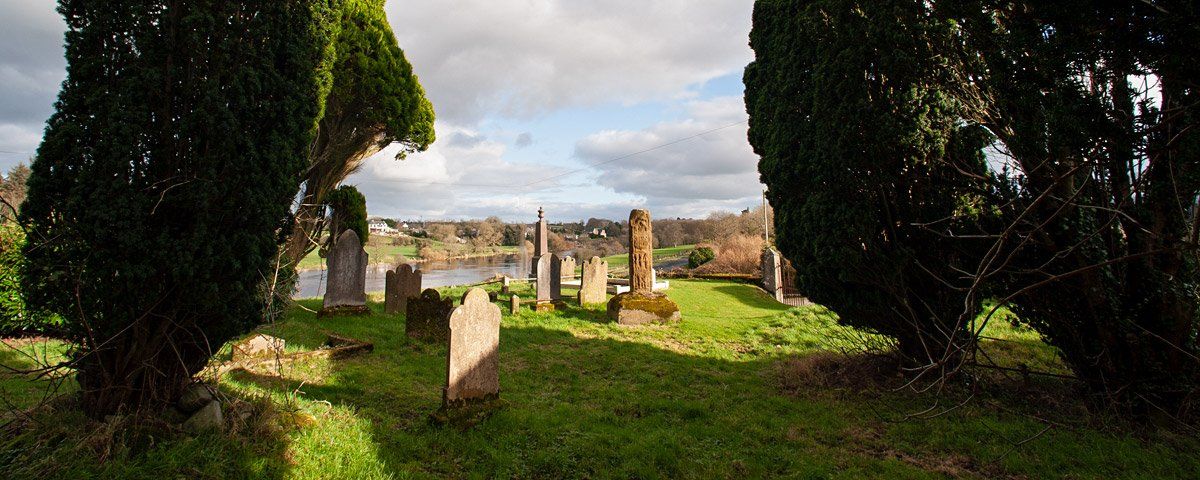The old Camus church and graveyard stands on the site of a significant monastic settlement founded circa 580AD by Abbott Comgall of Bangor, later to become a saint. This early Celtic / Christian site had close links to the settlements of Mountsandel and Dun Ceithern (The Sconce) near Articlave. Like many ancient church sites it has numerous yew trees and an intriguing atmosphere, nothing remains of the old monastery though it is recorded that the ruins were used to build the walls surrounding the graveyard. The site had commanding views of the river and is close to the important ford of Camus. In those days this would have been a key strategic location as well as the main crossing point for travellers. It was guarded by two forts, the remains of one of these still stands at the Loughan and was last used by the Normans.
A recorded story tells of St Columba (Colmcille) stopping here to visit Abbott Comgall before crossing the river on his way to Coleraine. He predicted that the spring water here would run red with blood from a battle that would take place, over the following century several battles took place but one nearby saw hundreds of men die and there blood seeped into the stream truning it red. The ancient church was used up until 1630 when during the Plantation of Ulster the Merchant Tailors, one of the London Guilds built a new church at Macosquin. From then on Camus and Macosquin were one. One artifact of the old church is the remains of its high cross dedicated to the memory of St. Comgall.
It stood in the churchyard until the mid-1700s, through an act of ignorance, malice or a natural event such as lightning, it was broken and the remaining stock used as a gate post for the churchyard. In 1905 its value was realized and the cross was placed at its present location. It is carved from sandstone and depicts Christian scenes including the baptism of Jesus, the Ark, and the murder of Abel. Beside a railed grave at the north end of the graveyard there is a bullaun stone, the water which lies in it is said to have magical properties and never runs dry. These stones were used as fonts for baptism, this particular one was highly regarded and used as a place of pilgrimage until the late Victorian period.



